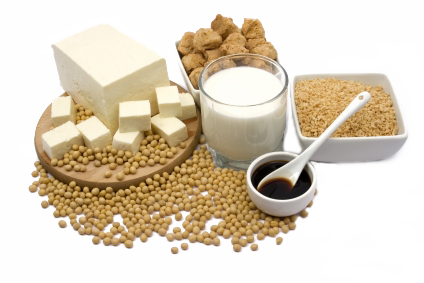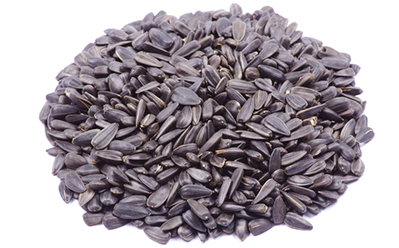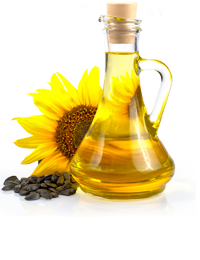Oil Products

We are counted amongst the globally renowned organizations, that are involved in offering Yellow Maize. It is widely used as a animal feed, in different food products are well as in various industries. Besides, it is also used for maize for corn maize, starch industry, corn oil and oil production. To suit our clients' requirements, we are offering this product in in different quantities and qualitative packaging. Offered Yellow Maize is appreciated for its freshness, hygiene and high
nutrition value.4
Sunflower Seed
 Sunflower seeds are an American original. Called either confection or non-oil, seeds are a delicious and nutritious snack or addition to your favorite food.
Sunflower seeds are an American original. Called either confection or non-oil, seeds are a delicious and nutritious snack or addition to your favorite food.
It is a native species to Sindh and was used by Indians for an important, high-energy food source. Spanish explorers carried it with them to Europe. Russian agronomists were responsible for the first agricultural hybrids. These returned to the United States with Russian and German immigrants.
Sunflower began as an important agronomic crop in the Pakistan in the 1970's, starting in North Sindh and West Punjab.
Confection sunflower seeds are normally black with white stripes and approximately five eighths of an inch long. The heavy hull accounts for approximately half the weight of the seed and is loosely fixed to the kernel inside. Seed size is primarily affected by plant genetics, but also to planting density and weather.
Sunflower seeds are graded according to size and separated into groups. The largest size will go into the in-shell market. The medium-sized seeds are usually hulled for the kernel market. The smallest size will go into the bird and pet feeding market.
Sunflower Oil
 Sunflower seeds are very high in oil content. Being a combination of monounsaturated and polyunsaturated fats with low saturated fat levels, sunflower seed oil is ideal for consumers and food manufacturers seeking a healthy and high performance non-transgenic vegetable oil.
Sunflower seeds are very high in oil content. Being a combination of monounsaturated and polyunsaturated fats with low saturated fat levels, sunflower seed oil is ideal for consumers and food manufacturers seeking a healthy and high performance non-transgenic vegetable oil.
Confection sunflower seeds are normally black with white stripes and approximately five eighths of an inch long. The heavy hull accounts for approximately half the weight of the seed and is loosely fixed to the kernel inside. Seed size is primarily affected by plant genetics, but also to planting density and weather.
Sunflower seeds are graded according to size and separated into groups. The largest size will go into the in-shell market. The medium-sized seeds are usually hulled for the kernel market. The smallest size will go into the bird and pet feeding market.
Sunflower Meal
Specification:
Protein Min 30%
Moisture Max 13%
The nutrient profile of sunflower seed meal offers a palatable source of fiber and protein. It complements soybean meal very well, creating a very effective combination when used in dairy and beef rations. Sunflower seed meal is available under our leading brand.
Sunflower meal is the by-product of the oil extraction process. Oil is the majority value of sunflower seed and meal is considered a by-product. Sunflower meal is an excellent livestock feed, especially for ruminants. For the last several years, the supply of U.S. sunflower meal has been somewhat inconsistent. That is changing as the domestic market for sunflower oil increases.
After the oil is extracted from the sunflower seed the remaining seed material is meal. The nutrient value of sunflower meal depends primarily on the type of processing it has gone through: (1) whether the oil was mechanically pressed (expelled) from the seed, or solvent extracted (which removes more of the oil), and (2) the degree to which the hulls were removed prior to oil processing. If part or all of the hulls remained on the seed prior to oil extraction, then the meal will have higher fiber content but lower protein and fat. Solvent extracted sunflower meal will have a protein percentage around 38 to 41% if dehulled, and around 28% if hulls are left on the seed. Fat content of solvent extracted meal is roughly 1%, and roughly 9% in mechanically pressed seed meal.
The color of the meal ranges from grey to black, depending upon extraction processes and degree of dehulling.

 Sunflower seeds are an American original. Called either confection or non-oil, seeds are a delicious and nutritious snack or addition to your favorite food.
Sunflower seeds are an American original. Called either confection or non-oil, seeds are a delicious and nutritious snack or addition to your favorite food. Sunflower seeds are very high in oil content. Being a combination of monounsaturated and polyunsaturated fats with low saturated fat levels, sunflower seed oil is ideal for consumers and food manufacturers seeking a healthy and high performance non-transgenic vegetable oil.
Sunflower seeds are very high in oil content. Being a combination of monounsaturated and polyunsaturated fats with low saturated fat levels, sunflower seed oil is ideal for consumers and food manufacturers seeking a healthy and high performance non-transgenic vegetable oil.